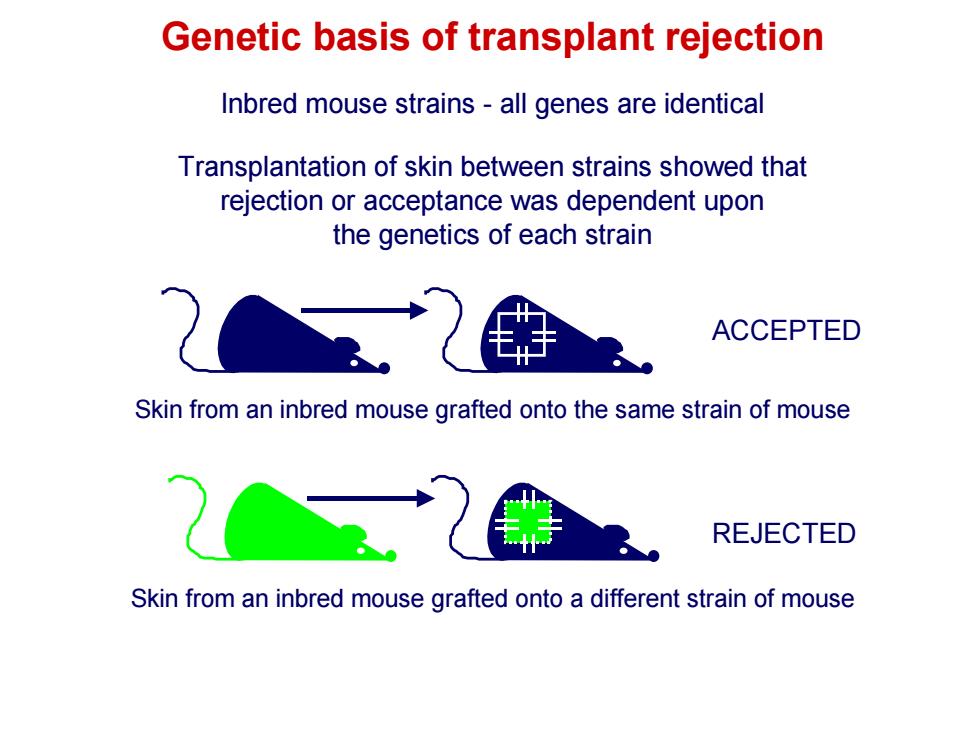
Genetic basis oftransplant rejectionInbred mouse strains - all genes are identicalTransplantationofskinbetween strains showedthatrejectionoracceptancewasdependent uponthe genetics of each strainACCEPTEDSkin from an inbred mouse grafted onto the same strain of mouseREJECTEDSkinfroman inbred mousegrafted ontoa different strainofmouse
Skin from an inbred mouse grafted onto the same strain of mouse Skin from an inbred mouse grafted onto a different strain of mouse ACCEPTED REJECTED Genetic basis of transplant rejection Inbred mouse strains - all genes are identical Transplantation of skin between strains showed that rejection or acceptance was dependent upon the genetics of each strain
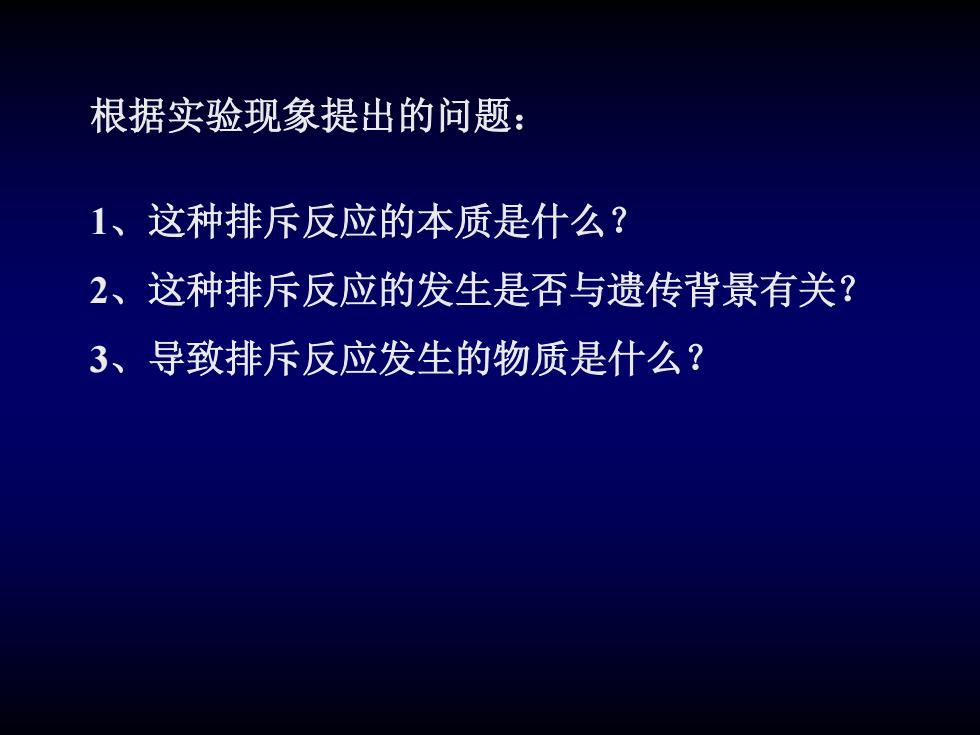
根据实验现象提出的问题1、这种排反应的本质是什么?2、这种排斥反应的发生是否与遗传背景有关?3、导致排斥反应发生的物质是什么?
根据实验现象提出的问题: 1、这种排斥反应的本质是什么? 2、这种排斥反应的发生是否与遗传背景有关? 3、导致排斥反应发生的物质是什么?
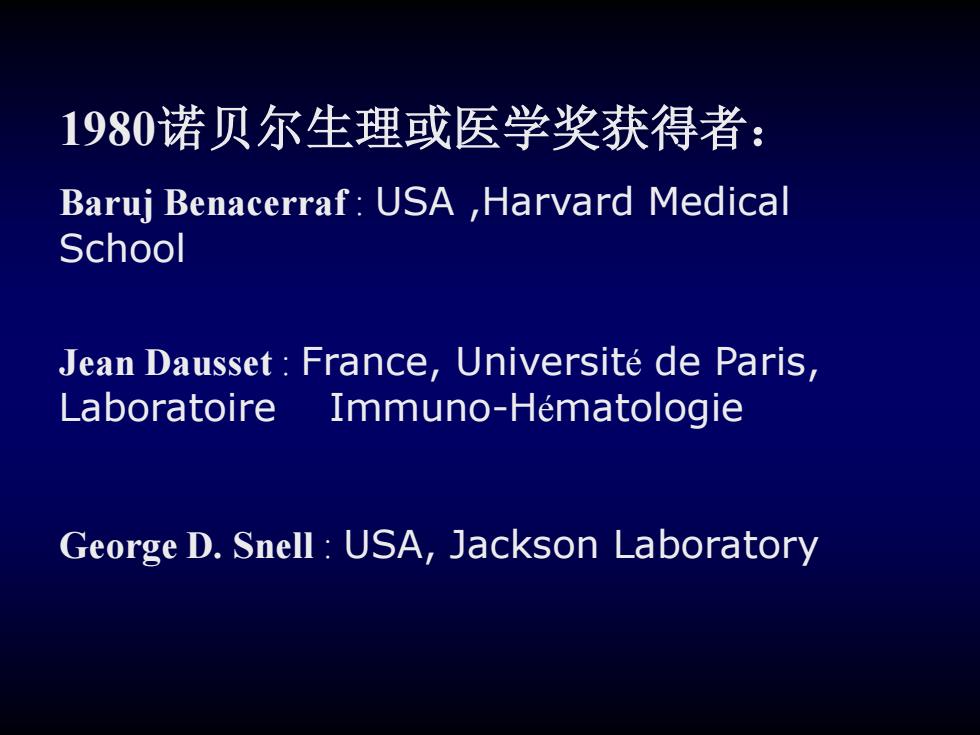
1980诺贝尔生理或医学奖获得者:BarujBenacerraf:USA Harvard MedicalSchoolJean Dausset:France,Universite de Paris,LaboratoireImmuno-HematologieGeorge D. Snell : USA, Jackson Laboratory
1980诺贝尔生理或医学奖获得者: Baruj Benacerraf : USA ,Harvard Medical School Jean Dausset : France, Université de Paris, Laboratoire Immuno-Hématologie George D. Snell : USA, Jackson Laboratory
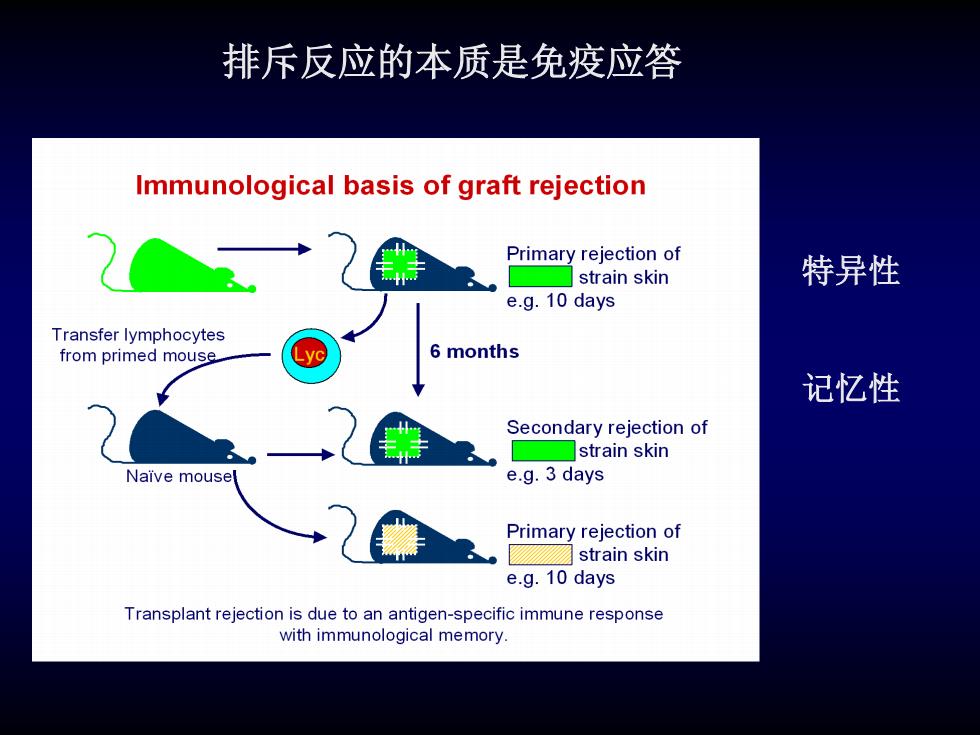
排斥反应的本质是免疫应答ImmunologicalbasisofgraftrejectionPrimaryrejection of特异性strain skine.g.10 daysTransferlymphocytes6monthsfromprimedmouse记忆性Secondaryrejection of-strainskine.g. 3 daysNaive mousePrimaryrejectionofstrainskine.g. 10 daysTransplantrejection is due to an antigen-specificimmune responsewith immunological memory
排斥反应的本质是免疫应答 特异性 记忆性
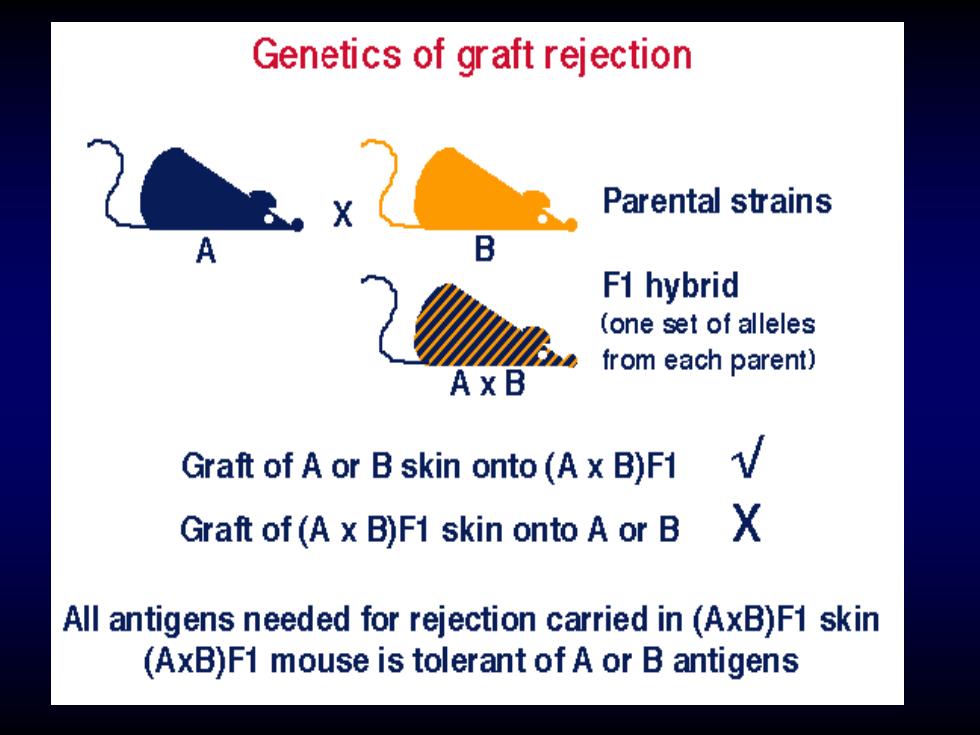
Genetics of graftrejectionParental strainsXBAF1hybrid(one set of allelesfromeachparent)AXB福Graft of A or B skin onto (Ax B)F1XGraftof(AxB)F1skinontoAorBAll antigens needed for rejection carried in (AxB)F1 skin(AxB)F1mouseistolerantofAorBantigens